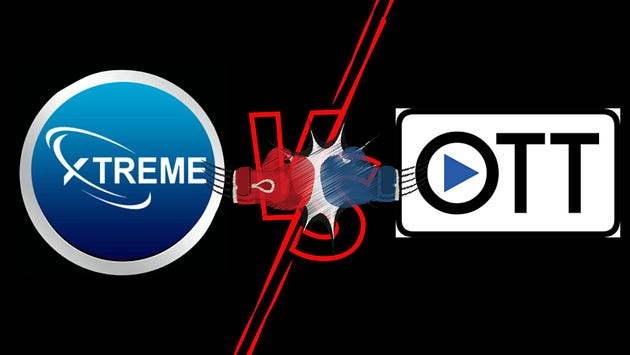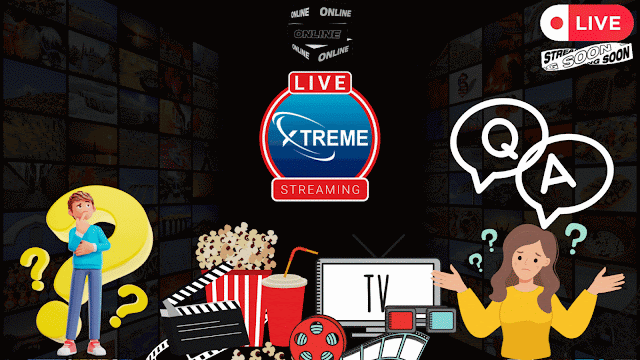OTT vs. IPTV — What Are the Differences?
In the rapidly evolving digital entertainment landscape, two prominent technologies have emerged as frontrunners: Over-the-Top (OTT) content delivery and Internet Protocol Television (IPTV). While both offer captivating entertainment experiences, they have distinct characteristics catering to diverse viewer preferences. In this comprehensive guide, we delve into the intricacies of OTT and IPTV, highlighting their differences, benefits, and applications to provide a crystal-clear understanding for casual consumers and tech enthusiasts alike.
Understanding OTT: Beyond Traditional Boundaries
Over-the-Top (OTT) content delivery has transformed how we consume entertainment by transcending the confines of conventional broadcasting methods. This revolutionary approach empowers viewers with a seamless and personalized viewing experience. With OTT, users access an expansive range of content — from movies, TV shows, original series, and documentaries to niche programs — delivered directly over the internet. That liberates audiences from the shackles of cable or satellite subscriptions, offering a newfound sense of freedom and flexibility in content consumption.
Key Features of OTT:
- On-Demand Content: One of the hallmark features of OTT is its ability to provide content on-demand. Whether it’s relishing an entire season of a TV show in one sitting or catching up on missed episodes at your own pace, OTT caters to individual viewing preferences.
- Personalization: Advanced algorithms power OTT services to curate content recommendations based on viewers’ past choices, creating a unique and tailored entertainment journey for each user.
- Device Diversity: OTT content is accessible across various devices, from smartphones and tablets to smart TVs and streaming devices. This flexibility allows users to switch seamlessly between devices without missing a beat.
- Original Content: Many OTT platforms invest in producing original content, fostering creativity and innovation in the entertainment industry. These exclusive shows and movies add to the allure of OTT services.

IPTV Unveiled: Bridging Conventional TV and the Digital Age
Internet Protocol Television (IPTV) presents a harmonious fusion of traditional television broadcasting and modern Internet technology. IPTV leverages the power of the IP network to deliver live TV channels, on-demand content, and interactive features, creating a digital incarnation of the time-tested TV experience.
Key Features of IPTV:
- Live TV Broadcasting: IPTV shines regarding real-time broadcasting of live TV channels. IPTV ensures you stay connected whether you’re tuning in for breaking news updates, sports events, or scheduled shows.
- Scheduled Programming: Similar to traditional TV, IPTV retains the concept of scheduled programming. This familiarity appeals to viewers who enjoy the structured anticipation of their favourite shows.
- Interactivity: IPTV enriches the viewer experience through interactive features. You can pause, rewind, and record live broadcasts, allowing greater engagement and control over your TV consumption.
- Hybrid Models: Some IPTV providers integrate live TV and on-demand content within a single platform, allowing users to access a wide range of programming.
What Sets Them Apart?
While OTT and IPTV offer captivating entertainment options, they cater to different viewer needs and preferences. OTT is synonymous with personalization, convenience, and content variety, making it ideal for those who cherish the freedom to choose what, when, and where to watch. Conversely, IPTV delivers the live TV experience, offering access to news updates, sports events, and a sense of community that resonates with traditional TV enthusiasts.
Which One Should You Choose?
Deciding between OTT and IPTV hinges on individual preferences and entertainment habits. If you value personalized content recommendations, flexible viewing schedules, and an expansive library of on-demand content, OTT is likely your preferred choice. On the other hand, if you enjoy real-time broadcasts, scheduled programming, and the interactive features associated with traditional TV, IPTV aligns more closely with your viewing preferences.
The Future of Entertainment: Convergence and Evolution
In the dynamic realm of entertainment technology, convergence, and evolution are constants. As technology evolves, the lines between OTT and IPTV may gradually blur, giving rise to hybrid models that seamlessly merge the benefits of both technologies. Whether you’re a genuine OTT enthusiast or an IPTV loyalist, the future promises even more immersive and enriching viewing experiences.
Conclusion
OTT and IPTV, while distinct in their offerings, stand as two pillars shaping the future of entertainment. OTT heralds a new era of personalized, on-demand content consumption, while IPTV pays homage to traditional TV broadcasting while embracing the digital age. As the landscape continues to evolve, the convergence of these technologies could yield a new paradigm that caters to the diverse needs of modern viewers.

.gif)

Comments
Post a Comment